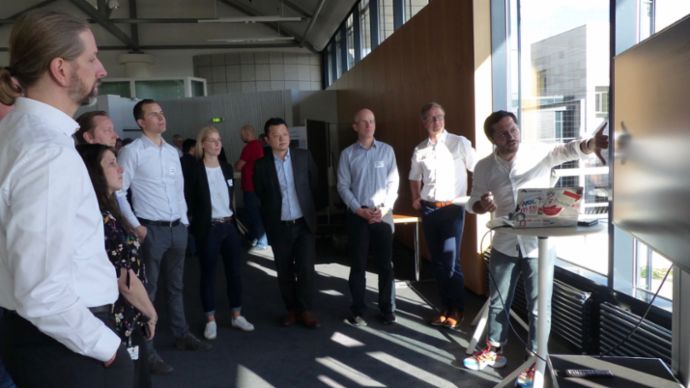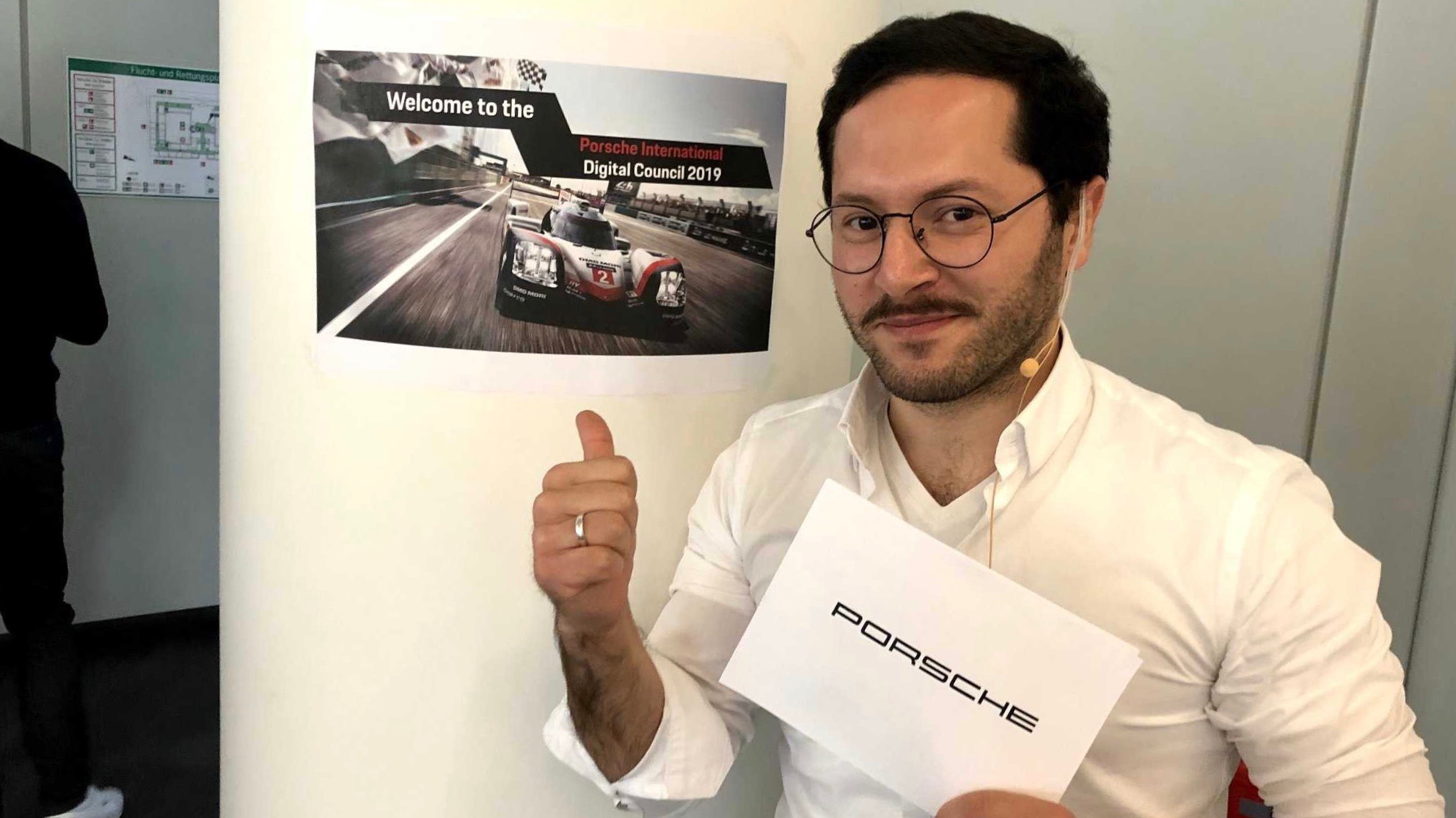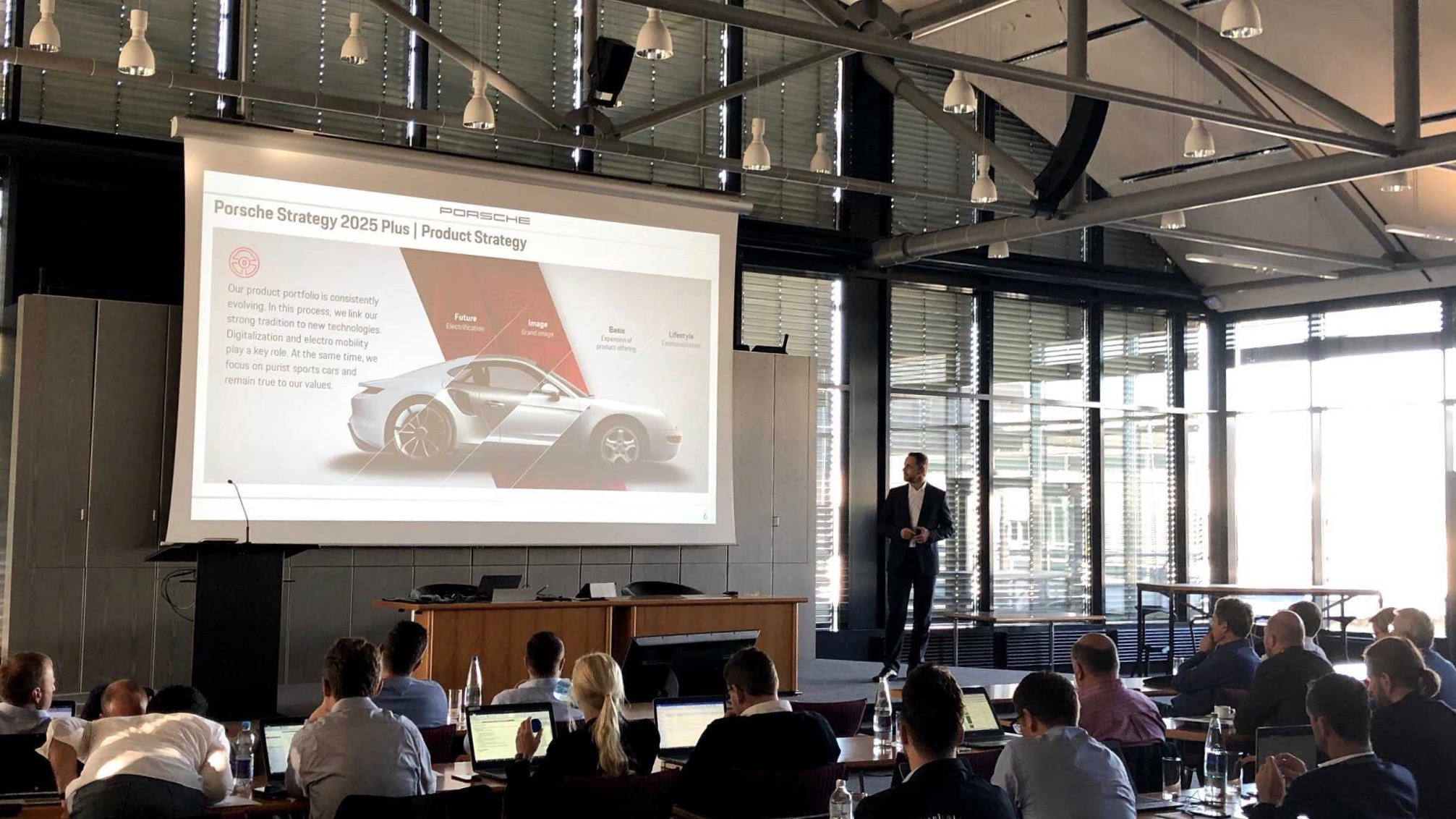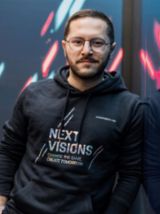We are living in exciting times. The information revolution is unfolding right before our eyes and technology is advancing ever more rapidly. About sixty years ago, the fastest computer executed about one million calculations per second. Today, the fastest supercomputer is capable of 200,000 trillion calculations per second. That is a lot of zeros!
But what does all that mean for Porsche and the automotive industry? How is technology changing the automotive landscape? What’s the role of IT in modern business? Last week, from the 16th to the 18th of October, I had the opportunity to discuss these and other questions with more than 60 international colleagues from 34 Porsche subsidiaries worldwide. Together with my team, I had the great pleasure to host the Porsche International Digital Council.

Three days of inspiration: fascinating projects, new initiatives, disruptive technologies
Every year, dozens of Porsche IT managers gather in Stuttgart to talk about all things digital. The aim of the three day conference is to pool the knowledge, expertise and experience of our subsidiaries’ IT professionals from all around the world. Porsche China, Great Britain, Middle East & Africa, Taiwan, Europe, North America and many other subsidiaries come together to to discuss market trends, exchange perspectives, and share highlights and challenges from local markets. Our topics ranged from our Porsche Strategy 2025+ to digital product organizations and infrastructure services, from firewall strategy and cloud enablement to Design Thinking, and from robotic process automation to artificial intelligence. It was an honor to be the anchorman and to get to know our international colleagues. Although it was my first Digital Council, it really felt like a class reunion!
Getting to know other markets and a visit at Porsche Digital
To better understand specific markets, we asked the participants to present their highlights and challenges. Porsche China, for example, has worked out an internal app in order to streamline corporate processes. Employees can register their working hours, manage payroll and account their travel expense — all digital, all easy. What impressed me is that this didn‘t take too much time, the colleagues just developed the app because it supports business. This is impressive and a good example to showcase the different development stages of the markets. China is way ahead when it comes to digital solutions — and therefore an important inspiration for the rest of the Porsche world. It’s called Chinafication.
The last day of the event took place at the Porsche Digital Experience Foundry in Ludwigsburg. The modern surrounding and inspirational talks and presentations allowed us to dive deep into the digital world. We focused on artificial intelligence, robotic process automation, and emerging technologies. Even though on the two days before we discussed future technologies and digital topics as well, the last day Porsche Digital was future and digital only — and this may explain why we renamed the event from “IT Council” to “International Digital Council” just now. The reason behind it is that the role of IT is changing.
Thinking ahead and shaping the future of IT at Porsche worldwide
The full potential of new technologies often only becomes clear over time. In other words, it is always difficult to predict which technologies will succeed, how long their influence will last, and what’s in store for our industry. As a sector, and as a company, we need to think carefully not only about which technologies we’re investing in and how we’re going to implement them, but also about the changing role of IT and our whole operating model. The International Digital Council offers the perfect opportunity for that — and this year, we wanted our subsidiaries to re-think the role of IT and digital together with us.
Because today, IT departments are no longer just administrators of existing systems. Due to ever shorter product and innovation cycles of new technologies, new possibilities arise ever faster. IT as it is set up in its classical form is only partially successful and effective today and tomorrow. IT will develop more and more into the role of a business enabler. For us, the time is now to build bridges between our digital units and the traditional IT department, and to think as one. This is where the magic happens: Try out new technologies in the digital units and bring them to scale with your corporate IT. This is why the interface between these functions is more important than ever.
When worldwide IT comes together, it can only be great
I am still in awe of the international and collaborative spirit of these three days. It was so great to have everyone together and realizing that we’re — literally — all in the same boat… well, room. This only strengthened my belief: Alone we have power. Together we have force.
Thanks to everyone who attended, I am already looking forward to next year’s Digital Council and to further enhance the event and exchange, to break up traditions and rethink the role of IT together!





